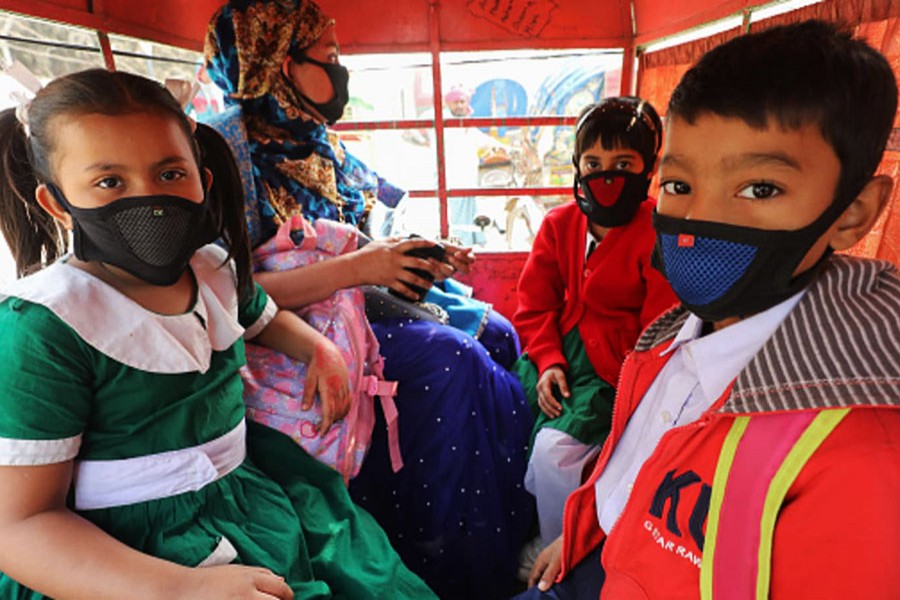The education of 37 million children in Bangladesh has been disrupted due to school closures since the start of the COVID-19 pandemic in early 2020, says a new report.
According to the report, about 800 million children-- 400 million in South Asia, 260 million in East Asia, and 140 million in Southeast Asia – across Asia has been disrupted from education due to the school closures.
In Bangladesh, schools were closed throughout the entire pandemic until 12 September, when they reopened again.
The report, ‘Situation Analysis on the Effects and Responses to COVID-19 on the Education Sector in Asia’ (SitAn Report), was released on Tuesday by UNICEF and UNESCO, reports UNB.
With schools now open in Bangladesh after an 18-month closure, we must spare no effort to rapidly put in place mechanisms that help children catch up, keeping a particular focus on the most disadvantaged children, said Sheldon Yett, UNICEF Representative to Bangladesh.
“Now is the time to invest, to strengthen the education system, and to bridge digital inequalities,” Yett said.
The report highlights the continued impact of the pandemic on children’s education and features various regional government’s programmes and initiatives to respond to it.
At a time of the year when children traditionally should have returned to school from annual holidays, the report urges governments to reopen schools as soon as it is safe to do so.
Marcoluigi Corsi, UNICEF Regional Director for East Asia and Pacific said they cannot overlook the impact that the disruption of education services has had on children, particularly the most vulnerable.
When schools remain closed, children miss out on the biggest opportunity to learn and develop to their full potential.
“The future of an entire generation is at stake; therefore, we need every effort to ensure a safe reopening of schools as soon as possible. Otherwise, the learning loss will be difficult to overcome,” said the UNICEF Regional Director for East Asia and Pacific.
While countries across Asia are taking actions to provide students with distance learning, a UNICEF-supported study by the Campaign for Popular Education (CAMPE) showed that two out of three pre-primary to upper secondary students in Bangladesh were not reached through remote education during pandemic school closures.
In addition to the lack of material assets and support to access technology, other significant obstacles that prevent disadvantaged children, and many girls, from accessing distance learning during these difficult times include a generally poor learning environment, an increase in pressure to take up domestic household chores and being forced to work outside the home.
It also called on governments and partners to strengthen teaching and teacher support, so as to address current low levels of learning and help narrow the learning divide, and protect and preserve education funding.
“Governments, partners and the private sector will need to work together, not only to get the strategies and levels of investment right, but to build more resilient, effective and inclusive systems that are able to deliver on the promise of education as a fundamental human right for all children, whether schools are open or closed,” said George Laryea-Adjei, UNICEF Regional Director for South Asia.
The increased risk of dropping out of schools due to the pandemic, especially for girls and children in poor and already marginalized families, threatens to reverse progress made in school enrolment in recent decades.
Shigeru Aoyagi, Director of UNESCO Bangkok said wile major efforts are needed to mitigate the learning loss of those children who return to school in the post-COVID-19 recovery phase, they must also remember that 128 million children in Asia were already out of school at the onset of the pandemic; this figure represents roughly half of all out-of-school children globally. “This is a learning crisis which needs to be addressed.”
Since the start of the pandemic, UNICEF and UNESCO have supported national governments to maintain and improve interventions to ensure continuity of children’s learning and to safely reopen and operate schools.


